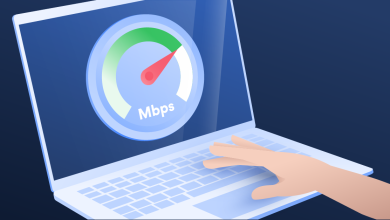Zero Trust: What is it and How is it Important for Your Cybersecurity?

Zero trust is a security framework that eliminates the implicit trust between networks and devices. This is achieved through micro-segmentation, monitoring, identity and access management, authentication, and less-privileged access control.
Identity and Access Management
A zero trust framework provides identity-based access control, allowing users and devices to connect to critical applications, workflows, and data only after verifying their identities. This approach is designed to eliminate the excessive implicit trust established by traditional security models and help protect against cyber threats, including phishing, malware, and ransomware. Think of it like a vigilant security guard, constantly checking your credentials and reassessing your trustworthiness.
A zero-trust model treats all users, devices, and networks as hostile until proven otherwise by strong authentication, secure application layer filtering, and reassessment of trust with continuous verification. A comprehensive zero-trust solution must support diverse environments and utilize various technologies, from multi-factor authentication (MFA) to encryption to security intelligence. It should also integrate with your existing Identity and Access Management (IAM) and Security Information and Event Management (SIEM) solutions.
Authentication
Authentication is one of the keys to good cybersecurity. It allows you to verify that a person or device is who they say they are and that they have permission to access your data. Generally, this is done by asking for an authentication token or password before allowing a connection to your internal network. A Zero Trust framework takes this to the next level, using continuous verification of users and devices, whether inside or outside your network perimeter.
The Zero Trust model assumes all connections are hostile and focuses on solid authentication and authorization for every device and user before granting them access to private applications. It also monitors behavior that doesn’t match standard patterns and quickly shuts down a session when it detects a threat. It also combines analytics, filtering, and logging to ensure security policies are followed.
A Zero Trust solution provides unified visibility and protection of hybrid-cloud environments. It leverages a combination of advanced distributed ZTNA, industry-leading micro-segmentation, phish-proof MFA, and an integrated cloud-native secure web gateway to remove inherent trust between devices, users, and apps while enforcing latency-sensitive security functions such as DLP and ATP.
Access Control
While trends like work from anywhere, BYOD, and multi-cloud have benefited employees and improved efficiency, they have also made it harder for IT teams to control and secure access to data and systems. Zero trust, or de-parameterization, addresses this by strengthening security in the face of dissolving network perimeters and reducing attack surfaces with strict authentication, authorization, and monitoring.
The basic premise of zero trust is that everything, from users and devices to applications, should be considered hostile until proven otherwise. The process combines strong authentication, authorization, and monitoring to verify user behavior, device health, traffic patterns, and other indicators of potential compromise. It then applies policies that restrict access based on assessment results.
To ensure that nothing slips through the cracks, an effective zero-trust solution will use an inline proxy architecture to inspect and monitor all connections—even encrypted traffic—before they reach their destination. This provides a powerful defense against ransomware and other threats amazons gpt55x.
To support a comprehensive zero trust solution, consider a platform that offers the full spectrum of capabilities—including multi-factor authentication, compliance assessment, identity and access management (IAM), integration with your SIEM or threat intelligence system, scoring, file inspection, and more.
Monitoring
While zero trust has become a cybersecurity mantra, it’s not a single technology or solution. It’s an overarching strategy based on principles that must be implemented across the entire IT environment. This can be difficult as piecemeal adoption can create security gaps. Additionally, zero-trust tools may not work well with legacy tech or require a significant IT infrastructure overhaul to accommodate them.
The zero trust framework starts from the premise that no user, device, or network should have implicit trust. Instead, they must prove their identity and authority before accessing applications or resources. This means every device, including those typically inside the corporate network (like workers who use a VPN from home or the office) and all those outside the firewall, need to be verified before they’re granted access to corporate systems. Adding multi-factor authentication to the mix helps make it harder for bad actors to circumvent security protocols and infiltrate your system.
In addition, logging all activity can help identify suspicious activities and provide evidence of breaches as they happen. Choosing the right team to manage your zero-trust implementation is critical. Zero trust teams generally comprise security and networking personnel, with a specific point of contact responsible for managing the on-ramps your organization chooses to deploy zero trust on.




